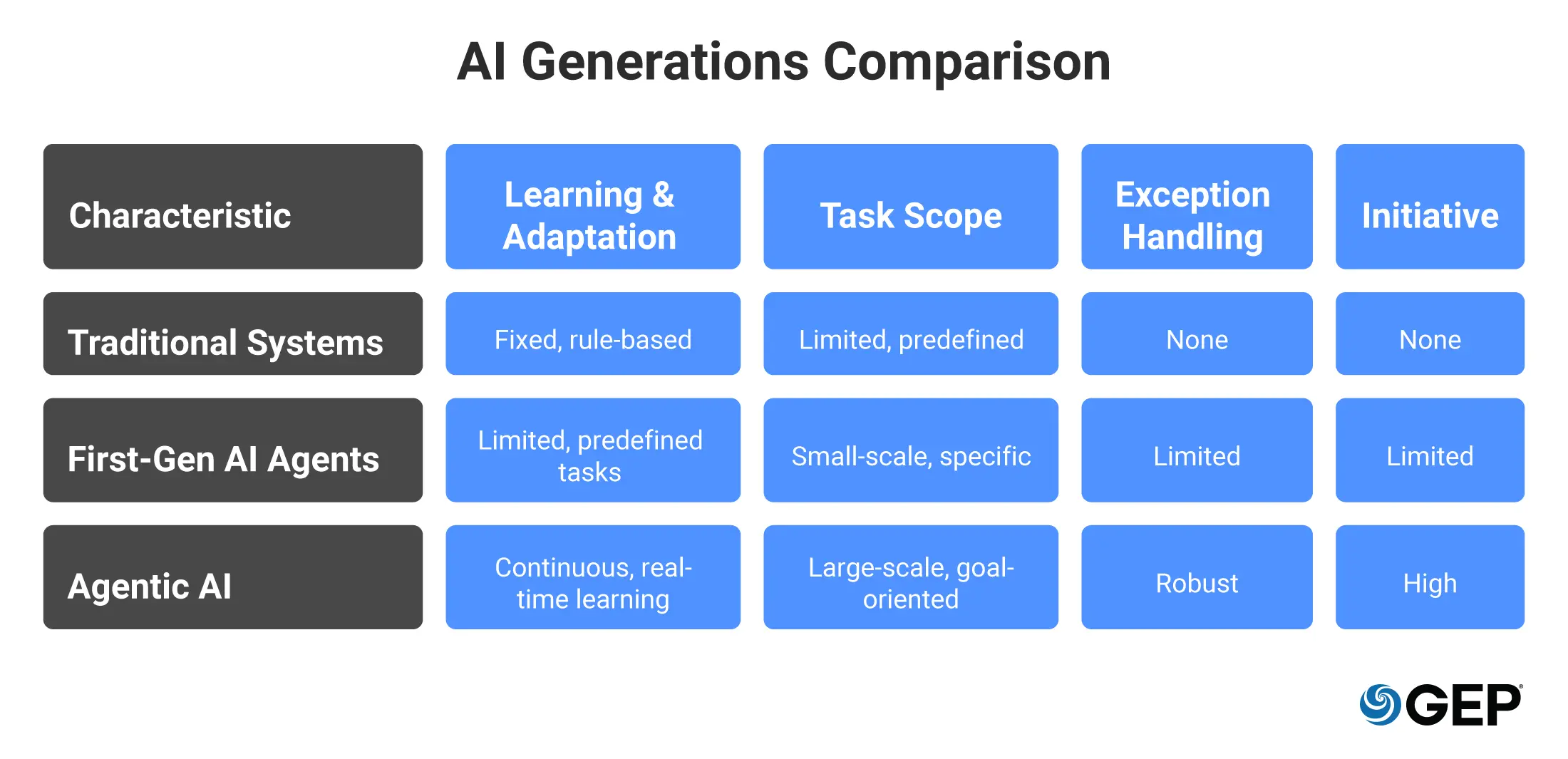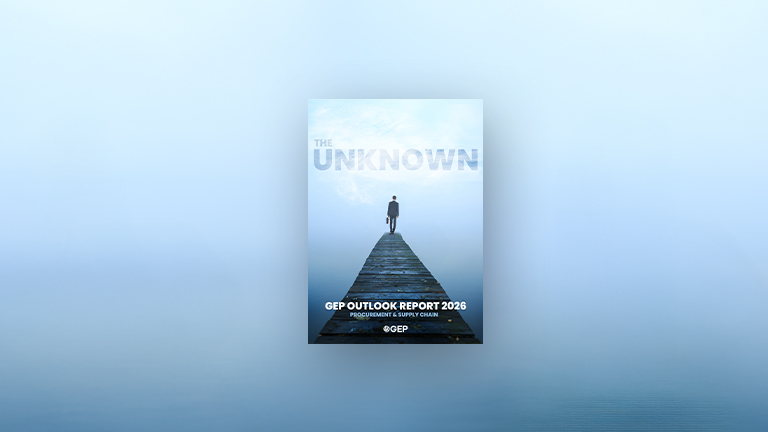
Don’t Just Automate Procurement, Allow It to Act on Its Own with Agentic AI
- Agentic AI goes beyond simple automation to independently plan and execute complex tasks and achieve strategic goals, like improving compliance or cutting costs.
- This technology can actively monitor market changes and supplier performance, allowing procurement teams to proactively manage risk and make real-time adjustments to strategy.
- By handling repetitive tasks, agentic AI frees up your team to focus on supplier relationships and driving innovation.
November 11, 2025 | Procurement Software 4 minutes read
In the last few years, procurement has struggled through supply chain disruptions, economic volatility and new regulations.
Technology and digital transformation have been key allies in this struggle. Now AI has burst on the scene, but let’s face it: most AI tools have been reactive. They’ve helped procurement pros analyze data faster or provided better user experience, but they haven’t been able to think and act on their own.
That is, until now.
Agentic AI completes procurement’s transformation from a transactional back-office operation to a proactive, goal-oriented value driver. It moves procurement from simply following scripts to autonomously pursuing strategic objectives.
This is about moving from "automation" to "autonomy." It's happening today, and it’s already delivering deep, measurable value in key areas.
The Business Case: Why Agentic AI Unlocks Deep Value
The most impactful change Agentic AI brings is its ability to tackle complex, multi-step processes on its own, freeing up human professionals to focus on relationships and strategy.
Autonomous Sourcing and Negotiation
Think about a typical sourcing event. It’s a chain of tasks: analyzing spend, finding potential suppliers, issuing RFQs, managing responses, negotiating and (finally) awarding a contract. Each step requires human intervention. Agentic AI changes this paradigm.
Instead of telling AI what to do every five minutes, you can give agentic AI a goal, like "source 10% of our tail spend on office supplies." The agent will then analyze historical spend data, identify the most suitable suppliers, send out requests for proposals, and even conduct preliminary negotiations.
It can make counteroffers based on real-time market data and historical win rates, all while ensuring every action remains compliant with company policies. This moves procurement from a reactive "get a quote" process to a proactive "achieve a sourcing goal" system, dramatically reducing cycle times and capturing savings in areas previously too tedious to manage.
Intelligent Category Management
In the past, category strategies were often static documents, reviewed maybe once a year. They were immediately outdated the moment a new tariff was introduced or a supplier's risk profile changed.
Agentic AI makes category management a dynamic process. An agentic system can continuously monitor market data, geopolitical events and supplier performance. If a sudden shift in raw material prices or a new regulation threatens your strategy, the system will alert you and recommend next steps AND, (with your permission) initiate new sourcing events or renegotiations.
This proactive insight allows procurement to be more agile, more resilient and more competitive. Not just a cost center.
Proactive Compliance and Risk Management
Compliance has traditionally been a reactive, audit-based function. You check for issues after the fact. Agentic AI is an always-on safeguard.
Procurement can set a goal for AI to "ensure 100% of our suppliers have valid certifications." It will then integrate data across contracts, supplier profiles and public registries to continuously monitor for issues.
An Agentic AI system can detect an expired certification in real time, flag the risk and even initiate the workflow to request updated documentation from the supplier. This shift from manual audits to automated management ensures a more resilient and secure supply chain with minimal human oversight.
Can Agentic AI Simplify Procurement?
Learn How to Move From AI Hype to Real-World Action and Results
Understanding the Shift: From Scripts to Strategy
This added autonomy is a big step beyond traditional AI. To see why, it is helpful to think in generational terms.
• Traditional Systems
These are the old ERP and e-procurement systems procurement has relied on for decades. They are fixed and rule-based and don't learn and adapt. They do exactly what you program them to do and nothing else.
• First-Gen AI Agents
They are smart bots and programs that perform a predefined task when asked to perform it. They are helpful to compose an email or complete a form but are incapable of working on large-scale tasks and freeze when there is an exception to process unexpectedly.
• Agentic AI
This is the new paradigm. These are high-level goals assigned to them, not a to-do list. They then:
→ Perceive and Plan
They do not simply wait to be told what to do; they observe and interpret the situation and formulate their own step-by-step approach to accomplish it.
→ Act and Adapt
They execute the plan while always scanning for fresh information and tweaking their approach based upon it in real time, like a human being.
→ Orchestrate
They can also schedule activities with any system and connect data from different tools to create a smooth end-to-end workflow.

Your Procurement Partner's Next Chapter
It is a paradigm shift, not an upgrade. It requires a different relationship with people, process, and technology. It promises to lift procurement out of reactive tools and to a generation where procurement can truly be a value-creating engine for the enterprise.
To thrive in this new era, procurement requires something more than a cookie-cutter AI approach: a partner with close domain knowledge and a customized, converged platform designed to handle complexities like those found in our space.
The transition to autonomy from automation is upon us, and converged source-to-pay solutions are designed precisely for this future, where procurement makes decisions with intent and intelligence, and not by direct order.



